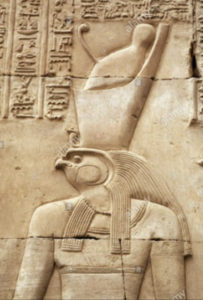 The Art of the Ancient World is an extremely diverse subfield within Art itself, and features a plethora of unique artworks. The spans of the artworks of the Ancient World go from Ancient Egypt, to Ancient Greece, and finally, Ancient Rome. Thus, as evidenced throughout the history of art, there are also significant differences amongst the artworks of all three artistic eras. Nevertheless, though certain differences are evidenced between these era’s, there are also a sizeable amount of similarities between them as well. This all traces back to the Egyptian versus Greek/Roman philosophies about art (humanism vs. idol/god-centered worship).
The Art of the Ancient World is an extremely diverse subfield within Art itself, and features a plethora of unique artworks. The spans of the artworks of the Ancient World go from Ancient Egypt, to Ancient Greece, and finally, Ancient Rome. Thus, as evidenced throughout the history of art, there are also significant differences amongst the artworks of all three artistic eras. Nevertheless, though certain differences are evidenced between these era’s, there are also a sizeable amount of similarities between them as well. This all traces back to the Egyptian versus Greek/Roman philosophies about art (humanism vs. idol/god-centered worship).
Concerning the first difference between these art periods of the Ancient World, Egyptian art, as aforementioned, was primly concerned with the worship to an almost cult-like extent of gods or kings. This is because the subject of afterlife was significantly ubiquitous throughout ancient Egyptian society, and was thus implemented within the artwork of the ancient Egyptians. For example, the god of the afterlife within ancient Egyptian society, Anubis, was so prominent within society, that his figure was carved within tombstones of ancient Egyptian kings and nobles. This is supported by the fact that the ancient Egyptians held a hierarchical society, and thus had nobility and kings buried with sacred jewels and riches. Furthermore, Ancient Egyptians preferred an otherwise straight and non-jagged look to their artworks, unlike the ancient Greeks and Romans. Therefore, as previously exemplified, it is easy to see as to why Ancient Egyptian artistic had its differences from other ancient world artworks.
On the ancient Greek and Roman side, however, there was a specifically high focus on humanism within the artworks of these two sides of the Art of the Ancient World. To elaborate, humanism was the holding of the idea that man was the be-all, end-all of the physical and spiritual world, and that aesthetics were the major focus. This is completely opposite of the kingly/godly worship that was exhibited throughout the artworks of Ancient Egypt. Furthermore, there was an increased focus on the realistic depictions of the human body, as evidenced via the increased dexterity and elaboration of physical traits of human beings. Such specific depictions were done using stronger materials, such as bronze and marble, on sculptures, which happened to be a big fad of the ancient Greeks and Romans.
Nevertheless, commonalities amongst all arts of the ancient world were evident as well. First is that all artworks be they Ancient Egyptian or Ancient Roman, happened to attempt a depiction of real-life beings, disregarding gender and individual preferences. Furthermore, all ancient artistic cultures aimed to depict individuals of power or significance, with differences only lying in material use and style. Nevertheless, the influence of the Arts of the Ancient World holds grand ubiquity in modern society, and is the reason we are able to evolve our modern art to its present form. The commonalities and differences of these ancient arts are what helped shape our artistic world both historically and modernly, and it is a marvel to see what we may continue to evolve art into as humans.

